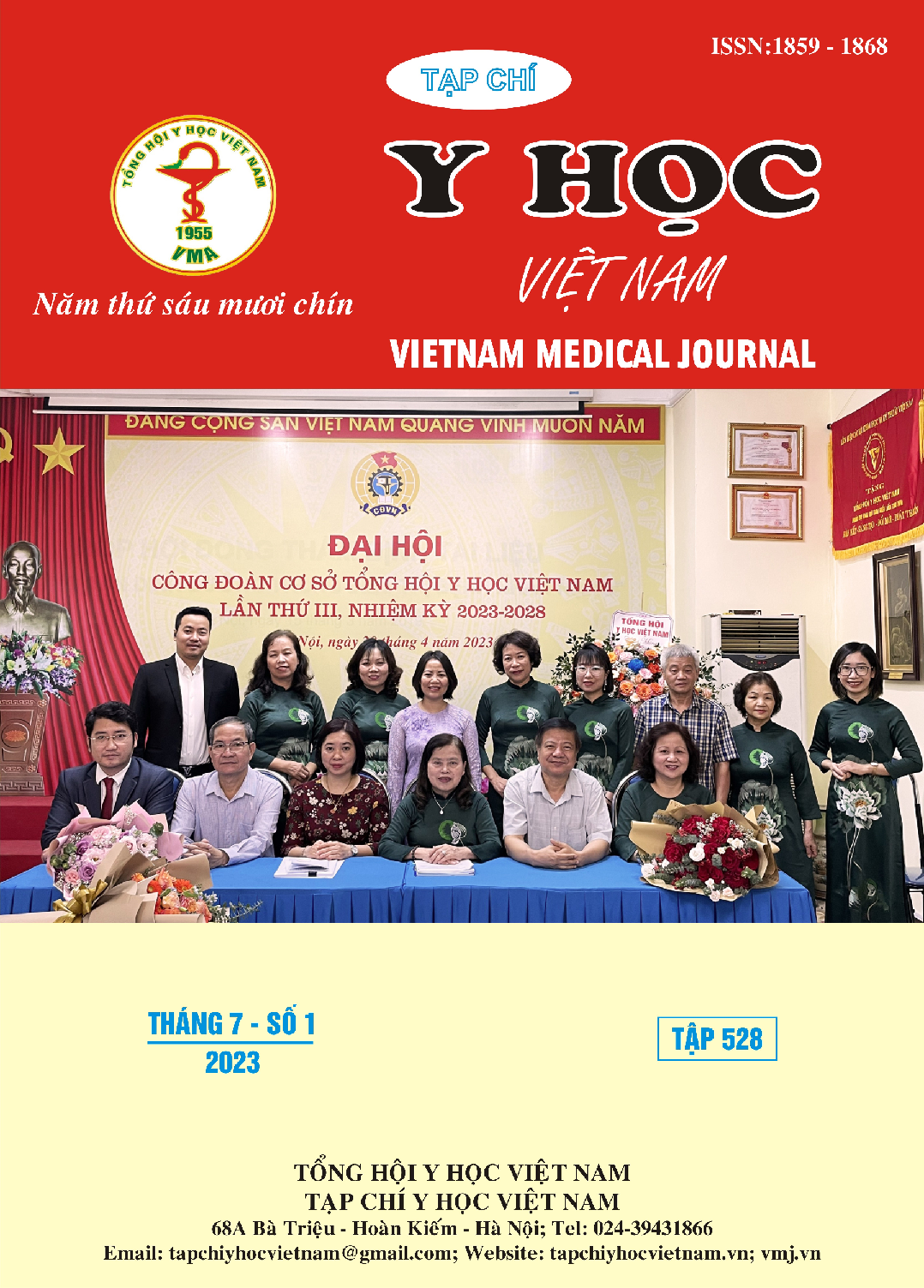RESEARCH ON SOME CLINICAL AND SUBCLINICAL CHARACTERISTICS IN PATIENTS WITH BILIARY TRACT INFECTIONS AT NGHE AN FRIENDSHIP HOSPITAL
Main Article Content
Abstract
Objectives: To describe some clinical and paraclinical characteristics in patients with biliary tract infections treated at Nghe An General Friendship Hospital. Research object and method: Descriptive study design. The study subjects included 115 patients with biliary tract infections who were treated at Nghe An General Friendship Hospital from June 2020 to June 2022. Results: A total of 115 patients with biliary tract infections treated at Nghe An general hospital j.s.c, men accounted for 54.8% of the study population and patients aged 60-79 years old accounted for the majority. the highest with 48.7%. The most common cause of biliary tract infection is gallstones with 85.2%, cholangiocarcinoma accounted for 7.8%. The majority of cases are cases where the culture results are 1 type of bacteria (86.1%). The bacteria with high positive result are Enterococcus (26.7%), E.Coli ESBL (-) (22.9%), E.coli ESBL (+) (16%), Klebsiella (7.6%) and Pseudomonas (7.6%). Conclusion: A high percentage of cases where culture results are a type of bacteria (86.1%), of which Enterococcus accounted for the highest rate (26.7%). And there was no link between gender and biliary tract infections, with older age the greater the likelihood of biliary tract disease. Abdominal pain is always a symptom in which right upper quadrant pain is the most common symptom with 94 patients, accounting for 81.7%.
Article Details
References
2. Zimmer V. và Lammert F. (2015). Acute Bacterial Cholangitis. Viszeralmedizin, 31(3), 166–172.
3. Mohammad Alizadeh A.H. (2017). Cholangitis: Diagnosis, Treatment and Prognosis. J Clin Transl Hepatol, 5(4), 404–413.
4. Greenberger N.J. và Paumgartner G. (2014). Diseases of the Gallbladder and Bile Ducts. Harrison’s Principles of Internal Medicine. 19, McGraw-Hill Education, New York, NY.
5. Bộ Y tế (2015). Nhiễm khuẩn đường mật. Hướng dẫn sử dụng kháng sinh. Nhà xuất bản Y học, 148–151.
6. Reuken P.A., Torres D., Baier M. và cộng sự. (2017). Risk Factors for Multi-Drug Resistant Pathogens and Failure of Empiric First-Line Therapy in Acute Cholangitis. PLoS One, 12(1), e0169900.
7. Trần Thị Lan Phương. Nghiên cứu về vi khuẩn trong dịch mật của bệnh nhân sỏi đường mật và mức độ nhạy cảm với kháng sinh của chúng. Trường đại học Y Hà Nội. 2003.
8. Chandra S., Klair J.S., Soota K. và cộng sự. (2019). Endoscopic Retrograde Cholangio-Pancreatography-Obtained Bile Culture Can Guide Antibiotic Therapy in Acute Cholangitis. Dig Dis, 37(2), 155–160.
9. Salvador V.B.D.G., Lozada M.C.H., và Consunji R.J. (2011). Microbiology and antibiotic susceptibility of organisms in bile cultures from patients with and without cholangitis at an Asian academic medical center. Surg Infect (Larchmt), 12(2), 105–111.
10. Rupp C., Bode K., Weiss K.H. và cộng sự. (2016). Microbiological Assessment of Bile and Corresponding Antibiotic Treatment: A Strobe-Compliant Observational Study of 1401 Endoscopic Retrograde Cholangiographies. Medicine (Baltimore), 95(10), e2390.


